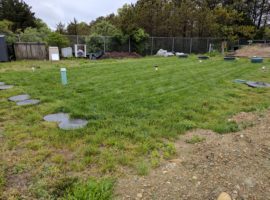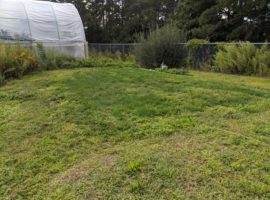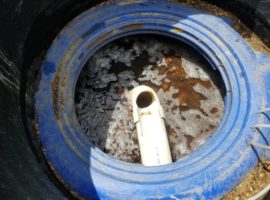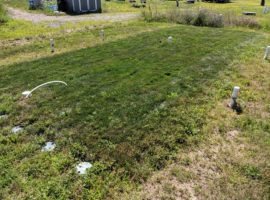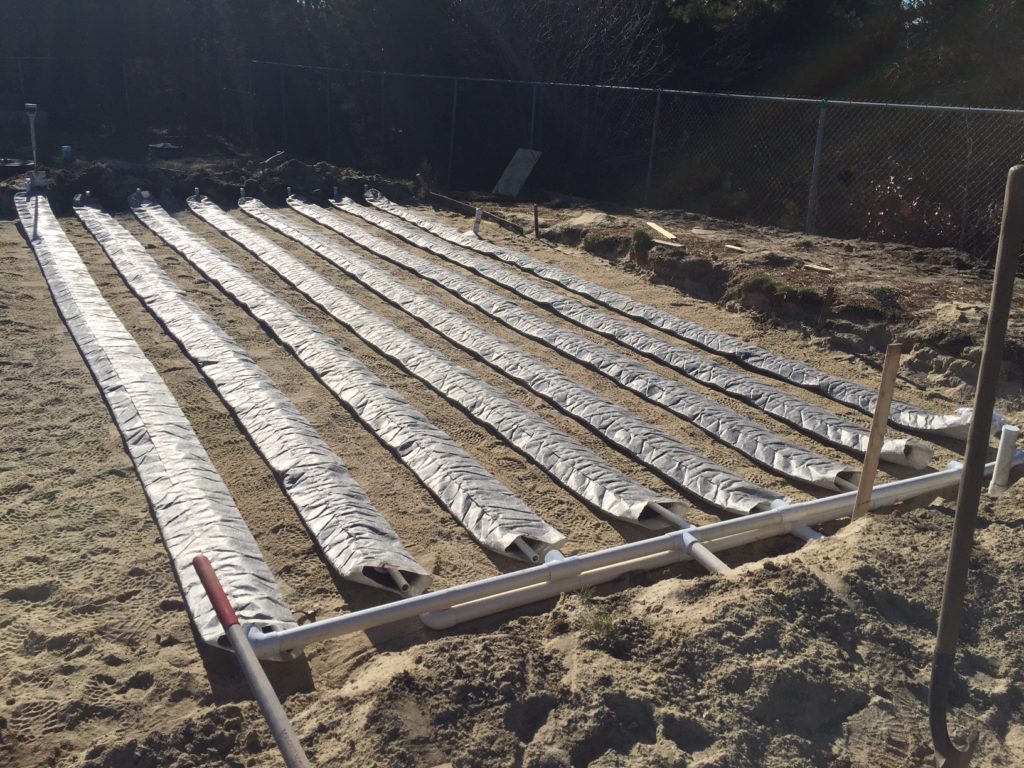
The first question on everyone’s mind when learning about the “Layer Cake” Project is always, “Why do you call it a layer cake?”
A layer cake treatment area is basically a leach field that is placed in layers, using materials that allow for the successive nitrification and denitrification of septic tank effluent as it percolates through the layers.
This layered soil absorption system is something MASSTC has been experimenting with for years to investigate the possibility of passively removing nitrogen from wastewater as it passes through successive layers of material on its way to the groundwater.
A Tool for Every Job
There is no “silver bullet” in onsite wastewater treatment. Each treatment scenario is different – a technology that works really well in one case may not work so well in another. Property limitations such as lot size or setback requirements may dictate the use of a system with as small a footprint as possible. Some situations need the best treatment available. Cost is always a factor. Sustainability is becoming more of an issue.
This system is not a silver bullet, but in situations where it is a good fit, it can easily out-perform many of the other available options in terms of nutrient removal and long term costs.
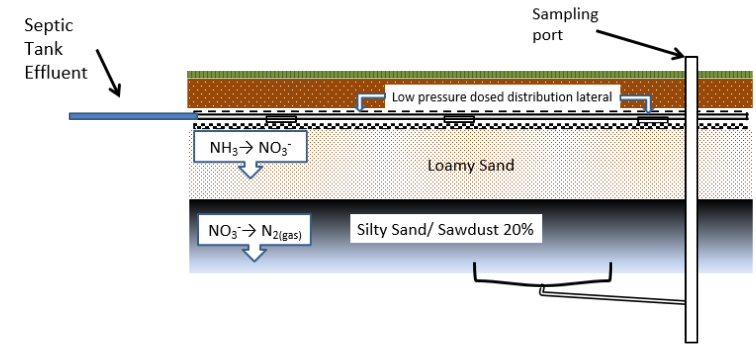
Additional links to learn more about MASSTC’s collaborations with towns on Layer Cake systems:
EASTHAM: The Town of Eastham and a property on State Highway received piloting approval for a “layer cake” septic system. The Provincetown Independent wrote all about it here.
BUZZARD’S BAY: Solutions to Nitrogen Pollution: Installation of Nitrogen Reducing Septic Systems Layer Cake Demonstration Project in the Buzzards Bay Watershed project here.
FALMOUTH: Innovative and Alternative Septic Systems for the West Falmouth Nitrogen-Reducing Septic System Demonstration Project. Read more here.
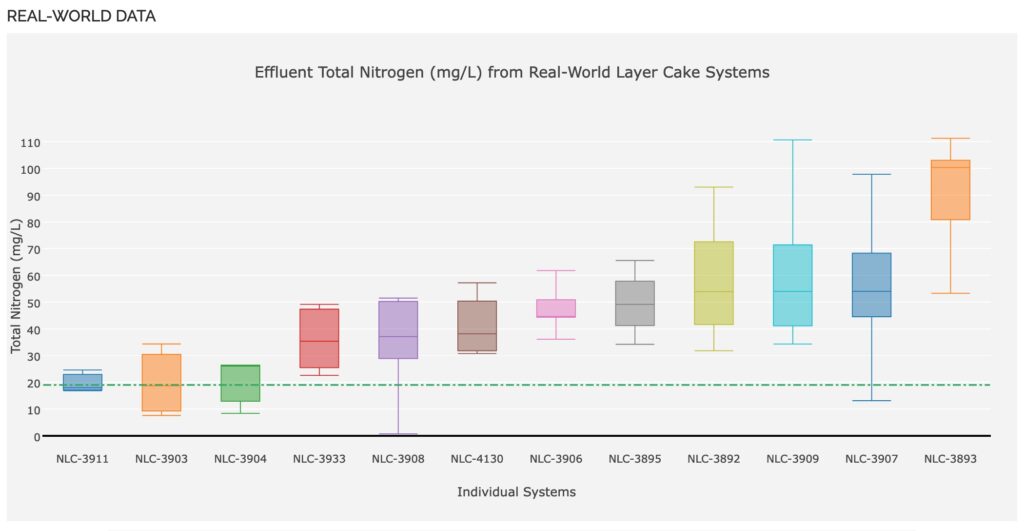
See more data from the project here.

